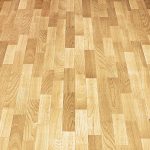Lead sheeting is often used for radiation protection in hospitals, nuclear facilities, pharmaceutical processes as well as in dental clinics and research departments. Typically, lead sheeting is heavy and is sold as a solid rolled plate that can be challenging to work with across multiple surface angles and shapes.
An alternative to consider to the solid, inflexible lead sheeting is the use of lead foil sheet. This is a very soft and easy to work with form of lead sheet that is ideal across a wide variety of applications.
There are different options in lead foil sheet that should be considered before placing an order. This is a rolled product that comes in different sizes and weights from fifty to seventy-five pounds per roll. There are several possible widths with most shipping at a maximum width of twelve inches.
The Advantages
The biggest advantage of lead foil sheet is that it is very soft and can easily shape around surfaces in a radiation room or anywhere where radiation is a concern. While much thinner and easier to shape and mold than lead sheet, which has to be cut and formed, it is also durable and is designed to provide the radiation protection required for the specific application. It can easily be used on tubing, canisters or other round or geometric shapes.
In addition to being easy to shape and form across various surfaces and shapes, the lead foil can be cut with shears, utility knives or even with good quality scissors. This makes working with the foil a very different experience than the rigid lead shielding.
Most of the manufacturers of lead foil will offer the rolls with an adhesive backing or without. With different thicknesses and options to have the adhesive pre-bonded to the lead, it is an ideal option for many types of lead shielding requirements.





